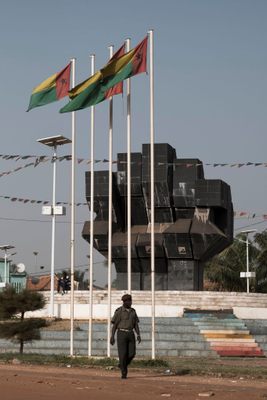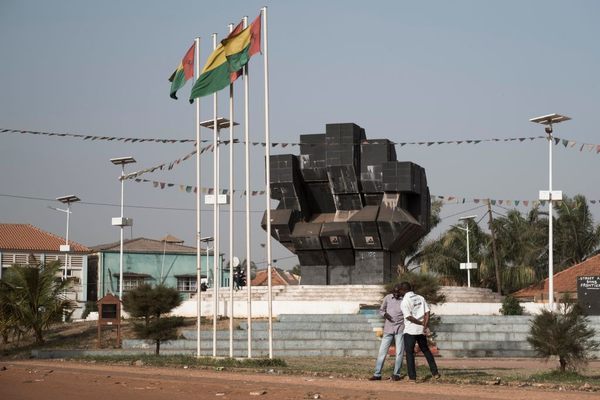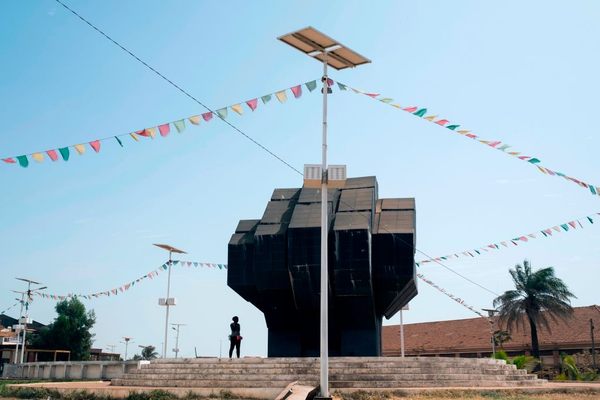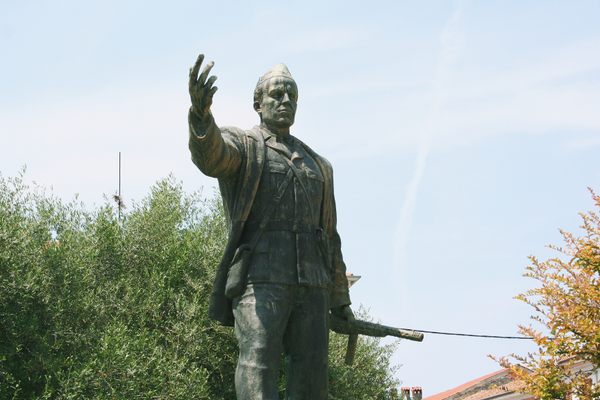About
A short walk from the Port of Bissau stands a large, fist-shaped sculpture known as the Mão de Timba (Hand of Timba). This monument along the Geba River commemorates a critical event in the history of Guinea-Bissau’s fight for independence.
For centuries, the people of Guinea-Bissau lived under Portuguese colonial rule. Portuguese traders first showed up in the early 15th-century in what was then the kingdom of Kaabu, a region subordinate to the powerful Mali empire. In 1687, the Portuguese founded the city of Bissau on land that had belonged to the Papei people. The new colonial city grew into one of Portugal's primary slave ports, which led to a massive stone fort being built there in 1753 to solidify Portuguese control of the city. When the international slave trade was outlawed in the 1830s, the city of Bissau began to decline. That is, until 1941 when the capital of Portuguese Guinea was moved from Bolama to Bissau.
In the 1950s, Guinea-Bissau, like many African nations at the time, began organizing for independence from the Portuguese colonizers. In 1956, the poet, agricultural engineer, revolutionary, and diplomat Amílcar Cabral established the African Party for the Independence of Guinea and Cape Verde (PAIGC). At its outset, the group’s mission was to achieve independence through non-violent means. One of PAIGC's first major acts was to help organize a peaceful strike for better salaries at the Pidjiguiti Docks of the Port of Bissau.
On August 3, 1959, sailors and dockworkers halted all operations at the port. Soon after, a colonial police force, the International and State Defense Police (PIDE), was called in to remove the strikers and regain control of the port. When PIDE broke through the port’s locked gate, they opened fire on the large crowd of strikers, killing 50 people and injuring hundreds. They also arrested and tortured numerous strikers.
For Cabral, the episode demonstrated that independence wouldn’t be achieved through peaceful means. A little over a month later, on September 19, 1956, PAIGC declared a fight for independence “by all possible means, including war.” For more than a decade, Cabral led PAIGC's guerrilla movement against the Portuguese colonial government until independence was finally achieved in 1974.
The Hand of Timba monument commemorates the dockworkers who were among the first to lose their lives in Guinea-Bissau’s war for independence. The clenched hand represents a swindler, someone who does intend to pay their debts—in this case, Portuguese colonizers who refused to pay dockworkers fair wages. Two other monuments nearby also commemorate the event: an anchor inscribed with the names of fallen dockworkers and a newly installed bust of Amílcar Cabral. The anniversary of the Pidjiguiti Massacre, August 3rd, is a national holiday in Guinea-Bissau.
Related Tags
Know Before You Go
The Hand of Timba monument is in Praça dos Martires off of Avenida do 3 de Agosto between Avenida Amilcar Cabral and Avenida Domingos Ramos.
Community Contributors
Added By
Published
December 15, 2021
Sources
- https://www.museudoaljube.pt/en/2021/08/03/pidjiguiti-massacre/
- https://www.officeholidays.com/holidays/guinea-bissau/pidjiguoiti-day
- https://eeas.europa.eu/archives/delegations/guinea_bissau/documents/press_corner/20160215_guia_guinea_bissau_uniao_europeia_afectos_pt.pdf
- https://uca.edu/politicalscience/dadm-project/sub-saharan-africa-region/portuguese-guinea-1951-1974/
- https://www.britannica.com/place/Guinea-Bissau/Security
- https://www.blackpast.org/global-african-history/bissau-guinea-bissau-1687/





















